Off to Hluboká nad Vltavou – Aleš Gallery awaits us
- Written by Portal Editor
After a hearty breakfast in Františkovy Lázně, we continued towards Hluboká on the Vltava to our agreed meeting with the director Aleš Seifert of the South Bohemian Aleš Gallery and the following day finally to the long-awaited exhibition “Metamorphoses”.
We were very excited about both the town of Hluboká itself and the gallery in the former castle riding school of the Hluboká nad Vltavou castle, especially since the South Bohemia region seems to be quite attractive for tourists, as we were able to see on the way.
First exploration of the town of Hluboká, formerly Podhrad
The journey to our accommodation took us partly along the Vltava, a huge golf area at the entrance to Hluboká and two lakes, which we will certainly explore later. The accommodation we booked, the Hotel Podhrad, had a large outdoor terrace with a view of the town centre, for which we quickly decided to reserve two places for dinner because there was still wonderful sunshine despite the late season.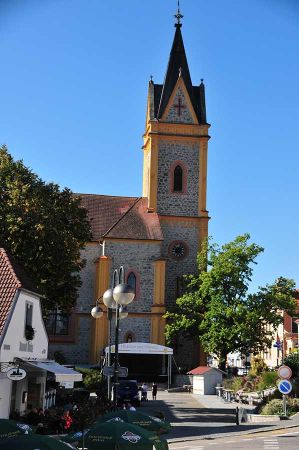
After checking in, we immediately set off to explore the immediate surroundings. We had of course already read some information about the place during our preliminary research and especially about the highlight of the place, the Hluboká nad Vltavou Castle, but more on that later. The area around Hluboká was already inhabited in the older Bronze Age, as evidenced by burial mounds found in the town's surroundings. At the beginning of the 1st century, strong fortifications were built on the hills of Baba and Hradec to protect the surrounding villages. In the 7th century the area was settled by Slavic tribes. The first fortification, or perhaps better castle, was built on a headland above the Vltava.
Podhrad – the name that is hardly known today
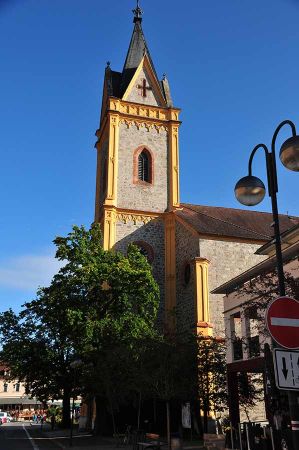 This first Frauenburg Castle (then called “Froburg”, later also “Frohnburg”) replaced former guard posts that were stationed here to protect the transport of goods on the Vltava. The castle quickly became the military and administrative centre of the region.
This first Frauenburg Castle (then called “Froburg”, later also “Frohnburg”) replaced former guard posts that were stationed here to protect the transport of goods on the Vltava. The castle quickly became the military and administrative centre of the region.
It belonged to the domain of King Ottokar II Přemysl. Only after it was purchased by William II of Pernstein in 1490 did the castle and the settlement that emerged nearby flourish; New farms, fish ponds and animal enclosures were created. Only now does the Czech name of Podhrad appear, which is hardly known today except for the name of our hotel.
Israelite houses with 20 families
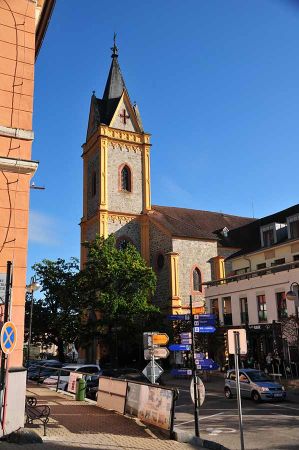 In 1840 the Podhrad market consisted of 117 houses with at least 1,817 residents. These included seven so-called “Israelite houses” with 20 families, the castle district consisting of nine houses with 55 residents, the settlements of Podskal, Hammer and Zamost, the Hřibecny or Neu Thiergarten single layers, the Neu Thiergarten hunter's house and the stately brick kiln. Podhrad had the privilege of three fairs and was the seat of the directorate district for the Frauenberg estate with 72 villages and shares in another seven.
In 1840 the Podhrad market consisted of 117 houses with at least 1,817 residents. These included seven so-called “Israelite houses” with 20 families, the castle district consisting of nine houses with 55 residents, the settlements of Podskal, Hammer and Zamost, the Hřibecny or Neu Thiergarten single layers, the Neu Thiergarten hunter's house and the stately brick kiln. Podhrad had the privilege of three fairs and was the seat of the directorate district for the Frauenberg estate with 72 villages and shares in another seven.
In the market town there was a dairy farm, a brewery, a distillery, a potash boiler, a mill with a board saw and eleven inns. Podhrad was the parish for the villages of Baurowitz (Bavorovice) and Kronfellern as well as the Wondrow and Křesin farms. Until the middle of the 19th century, Podhrad always remained subservient to the Frauenberg rule.
The majority of the local population was Czech-speaking
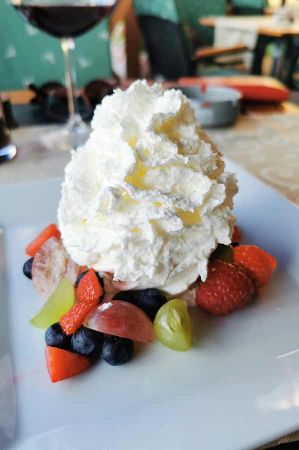 The acquisition of the properties by Johann Adolf I zu Schwarzenberg in 1661 and the economic fortunes of the Schwarzenbergs brought further prosperity to the region.
The acquisition of the properties by Johann Adolf I zu Schwarzenberg in 1661 and the economic fortunes of the Schwarzenbergs brought further prosperity to the region.
After the abolition of patrimonial rule, Podhrad formed a market town in the České Budějovice district from 1850 with the districts Podskalí (Podskal) and Zámostí (Zamost). Podhrad was the seat of a district court. In 1888, Johann Adolf II, Prince of Schwarzenberg, died there. On October 4, 1907, Podhrad received city rights. The majority of the local population was Czech-speaking. In 1910 the community had 2,835 inhabitants, of which 2,788 were Czech and 43 were German. The town of Podhrad had 1,462 inhabitants, of which 1,419 were Czech and 39 were German. There were 780 Czechs living in Zámostí, 589 Czechs and four Germans in Podskalí.
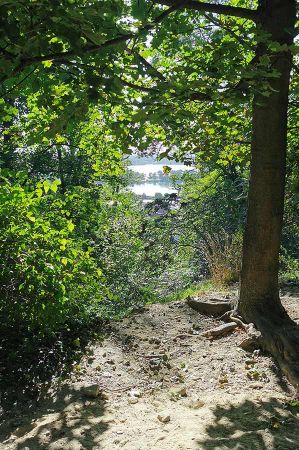 After the name of the castle Hluboká (Frauenberg) had been used as a place name as an alternative to Podhrad since the end of the 19th century, the official name was changed to Hluboká (Frauenberg) in 1912. The official name suffix nad Vltavou was introduced on November 19, 1923.
After the name of the castle Hluboká (Frauenberg) had been used as a place name as an alternative to Podhrad since the end of the 19th century, the official name was changed to Hluboká (Frauenberg) in 1912. The official name suffix nad Vltavou was introduced on November 19, 1923.
Today Frauenberg Castle is probably the most important attraction in Podhrad, but the surrounding area is also ideal for hiking and cycling. By the way, twin towns are Bollingen in Switzerland and Neustadt an der Aisch, as you can clearly see from the sign in the town centre.
We will be back!
Please read as well:
Karlovy Vary thermal springs - historical development
Beginning 70s - Emerson, Lake and Palmer and HR Giger
-
 Hluboká former Podhrad in Bohemia
Hluboká former Podhrad in Bohemia
Hluboká former Podhrad in Bohemia
Hluboká former Podhrad in Bohemia
-
 Hluboká former Podhrad in Bohemia
Hluboká former Podhrad in Bohemia
Hluboká former Podhrad in Bohemia
Hluboká former Podhrad in Bohemia
-
 Hluboká former Podhrad in Bohemia
Hluboká former Podhrad in Bohemia
Hluboká former Podhrad in Bohemia
Hluboká former Podhrad in Bohemia
-
 Hluboká former Podhrad in Bohemia
Hluboká former Podhrad in Bohemia
Hluboká former Podhrad in Bohemia
Hluboká former Podhrad in Bohemia
-
 Hluboká former Podhrad in Bohemia
Hluboká former Podhrad in Bohemia
Hluboká former Podhrad in Bohemia
Hluboká former Podhrad in Bohemia
-
 Hluboká former Podhrad in Bohemia
Hluboká former Podhrad in Bohemia
Hluboká former Podhrad in Bohemia
Hluboká former Podhrad in Bohemia
-
 Hluboká former Podhrad in Bohemia
Hluboká former Podhrad in Bohemia
Hluboká former Podhrad in Bohemia
Hluboká former Podhrad in Bohemia
-
 Hluboká former Podhrad in Bohemia
Hluboká former Podhrad in Bohemia
Hluboká former Podhrad in Bohemia
Hluboká former Podhrad in Bohemia
-
 Hluboká former Podhrad in Bohemia
Hluboká former Podhrad in Bohemia
Hluboká former Podhrad in Bohemia
Hluboká former Podhrad in Bohemia
https://www.alaturka.info/en/czech-republic/cheb/6340-off-to-hluboka-nad-vltavou-ales-gallery-awaits-us#sigProId605283ccf3
